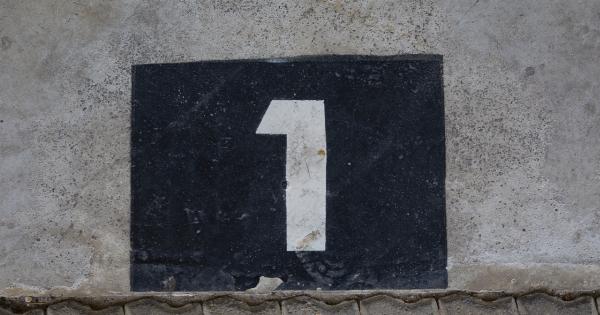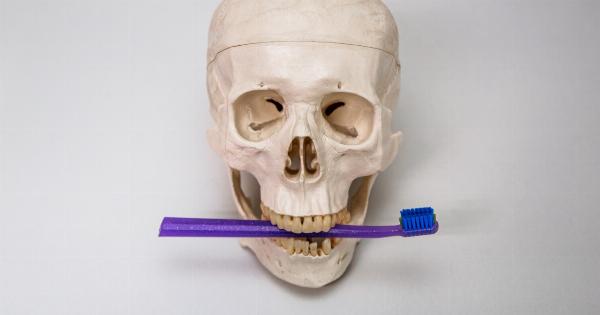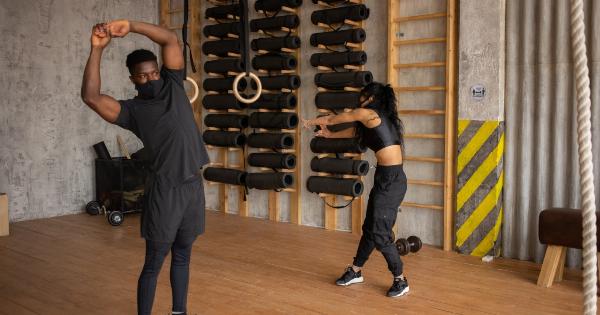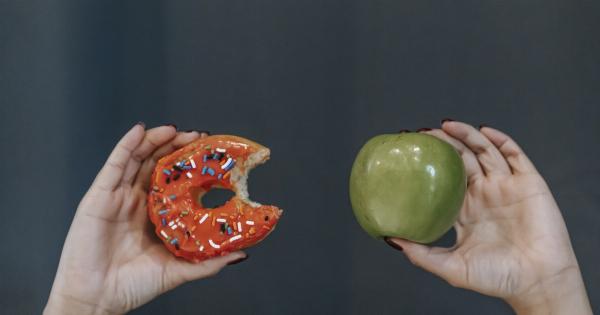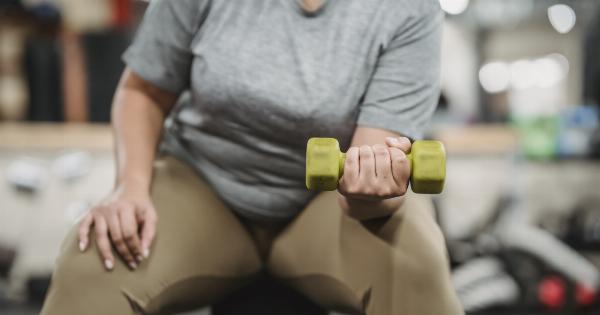Osteoporosis is a condition characterized by weakened bones that are more prone to fractures and breaks. It affects millions of people worldwide, particularly women over the age of 50.
While factors such as age, gender, and genetics play a role in determining osteoporosis risk, lifestyle choices also have a significant impact. One of the most effective ways to reduce the risk of osteoporosis is through regular exercise and physical activity. In this article, we will explore the various ways in which movement and exercise can help in decreasing the risk of osteoporosis.
Building Strong Bones through Weight-Bearing Exercise
Weight-bearing exercises are activities that involve bearing your own body weight through your legs and feet, working against the force of gravity. These exercises stimulate bone growth and help in maintaining bone density.
Some examples of weight-bearing exercises include:.
- Walking or jogging
- Dancing
- Hiking
- Aerobics
By engaging in weight-bearing exercises for at least 30 minutes a day, you can significantly reduce your risk of osteoporosis.
These exercises not only strengthen your bones but also improve your balance and coordination, reducing the risk of falls and fractures.
Resistance Training for Stronger Muscles and Bones
In addition to weight-bearing exercises, resistance training is also crucial for improving bone health. Resistance exercises involve working against an external force, such as lifting weights or using resistance bands.
This type of exercise helps in building muscle strength, which directly contributes to better bone health.
Resistance training can be tailored to individual needs and abilities, making it suitable for everyone, regardless of age or fitness level. It is recommended to perform resistance exercises at least two days a week, targeting different muscle groups.
This will not only improve your bone density but also enhance overall muscle tone and strength.
The Role of Flexibility and Balance Training
Beyond weight-bearing and resistance exercises, flexibility and balance training are equally important for reducing the risk of falls and fractures associated with osteoporosis.
These exercises help in improving joint flexibility, enhancing range of motion, and maintaining stability.
Yoga and tai chi are excellent examples of exercises that focus on flexibility and balance. The slow, controlled movements in these practices not only improve muscle strength but also help in developing better coordination and balance skills.
By incorporating flexibility and balance exercises into your routine, you can reduce the risk of falls and fractures, promoting overall bone health.
The Benefits of High-Impact Exercises
High-impact exercises involve jumping, running, or any activity where both feet are off the ground at the same time.
While these exercises may not be suitable for everyone, for those who can engage in them, they offer exceptional benefits for bone health.
High-impact exercises, such as jumping jacks or jumping rope, place stress on the bones, leading to increased bone density and strength.
These activities can be particularly beneficial for younger individuals, as bone density tends to peak in the early 20s. However, caution should be exercised when performing high-impact exercises, as they may put excessive stress on the joints. It is advisable to consult with a healthcare professional before implementing high-impact exercises into your routine.
Staying Active Throughout Life
Exercise and physical activity are essential for reducing the risk of osteoporosis, but it is equally important to maintain an active lifestyle throughout life.
Engaging in regular movement from childhood through adulthood helps in building strong bones and maintaining bone density.
Encourage children and teenagers to engage in physical activities, such as sports, dancing, or martial arts, as these activities provide a strong foundation for healthy bones. As we age, maintaining an active lifestyle becomes even more crucial.
Adults should focus on a combination of weight-bearing, resistance, flexibility, and balance exercises to maintain optimal bone health.
Additional Factors to Consider
While exercise plays a crucial role in reducing the risk of osteoporosis, there are additional factors to consider for overall bone health.
Firstly, proper nutrition is essential for bone health. A diet rich in calcium, vitamin D, and other essential nutrients helps in supporting bone growth and strength.
Consuming dairy products, leafy green vegetables, and fortified foods can help in meeting the body’s calcium requirements.
Secondly, limiting the consumption of alcohol and avoiding smoking is also recommended for better bone health.
Excessive alcohol consumption and smoking can hinder the body’s ability to absorb calcium, leading to weaker bones and increased fracture risk.
Incorporating Exercise into Daily Life
It is important to note that exercising to reduce the risk of osteoporosis does not necessarily mean spending hours in the gym. Making small changes to your daily routine can make a significant difference.
Here are a few simple ways to incorporate exercise into your daily life:.
- Take the stairs instead of the elevator or escalator.
- Go for short walks during your lunch break or after dinner.
- Stand or walk around while talking on the phone.
- Do stretching exercises while watching TV.
- Join a dance or fitness class for added motivation and enjoyment.
Remember, every bit of movement counts towards improving your bone health and reducing the risk of osteoporosis.
Conclusion
Regular exercise and physical activity are essential for reducing the risk of osteoporosis.
Weight-bearing exercises, resistance training, flexibility and balance exercises, as well as high-impact activities, all contribute to maintaining optimal bone health. It is important to consult with a healthcare professional before starting any new exercise program, especially if you have existing medical conditions or concerns.
By prioritizing movement and incorporating exercise into your daily life, you can significantly decrease the risk of osteoporosis and enjoy a healthier, more active lifestyle.



